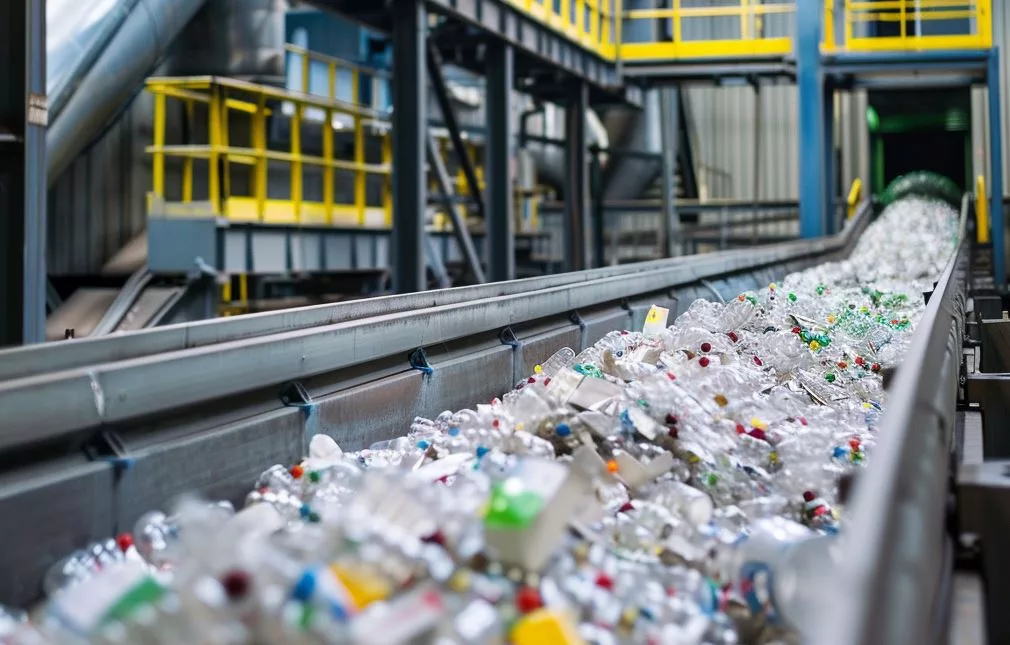Recycling Plastic: Is it Working, and are we Doing Enough…?
Once seen as a ‘wonder material’, this by-product of the oil industry has become a global environmental menace.
Millions of tonnes of plastic garbage are dumped into landfills and oceans each year, wreaking havoc on marine life and ecosystems.

We have a stop-gap solution for the non-biodegradable detritus that doesn’t just get tossed into the nearest ravine, river, or road: Recycling. But does that work well enough to balance things out?
Recycling has for years been hailed as “the solution” to at least part of the problem. Households and companies are encouraged to separate their trash, towns establish complex and elaborate collection systems, and consumers are persuaded to opt for items manufactured from recycled materials where possible. The question remains: How effective is this global campaign?
The appeal is obvious. If we can reduce the demand for new plastics and limit production, we can – in theory, anyway – mitigate the material’s detrimental impacts. The reality – surprise – is complicated, and plagued with challenges. The process involves more than just collecting and processing waste; it includes onerous processes, each of which influences the overall viability and efficiency. The factors that drive the success or failure of recycling programmes include participation by individuals and companies, the careful sorting of various types of plastic, complex technical processes at specialised facilities, and market demand for the recovered materials.
It will come as no surprise to learn that popular perceptions of the system’s efficacy can differ dramatically from its actual outcomes. While many of us dutifully throw plastic tubs, bags, boxes and other debris into marked, well-distributed containers in our towns and cities, others – probably the majority – don’t bother. And so, it ends up in landfills or, worse, just tossed out of car windows or over fences. These gaps in our efforts pose questions that must be considered. Are there any better ways to handle the issue?
Various issues plague the recycling sector, and alternatives exist. By integrating professional perspectives, case studies and research, a slightly hopeful picture starts to emerge. Are our global recycling efforts genuinely making a difference, or do we need to reconsider our approach?
The Realities
The industry is frequently touted as a beacon of hope, but the reality is more complex – and less positive – than this generic optimism suggests. To understand the true state and usefulness of recycling, it is critical to look at the mechanics of the process, the types of plastics used – not all can be recycled – and the overall economic and environmental implications.
Plastic is not a single substance; it’s a class of polymers of varying properties and applications. There is PET (polyethylene terephthalate), commonly used in water bottles, HDPE (high-density polyethylene), used in detergent bottles, and PVC (polyvinyl chloride), which is used in just about everything, from plumbing pipes to garden furniture and children’s toys. Each necessitates a different and distinct recycling method, complicating the process.
It all begins with the crucial step of collection, followed by sorting, either manually or via advanced tech. After this comes cleaning to remove contaminants, necessary and difficult due to food traces and other residue. The cleaned trash is then shredded, melted, and moulded into new items. But not all plastics make it through the process to the point where “new” plastic is created; many are “downcycled” into a lower-quality, less flexible, material.
Economic Viability
Despite increasing infrastructure and the development of new equipment, global recycling rates remain frustratingly low. Only around nine percent of total plastic products are recycled, with the remaining 81 percent ending up in landfills, or the environment.
This has a number of causes, including a lack of uniform systems around the world, insufficient economic incentives, the higher cost of recycling compared to manufacturing new plastics – and public apathy.
Market dynamics make it less economically viable. Recycled plastics usually compete with “virgin” plastics, which are often less expensive to produce thanks to low petroleum costs and larger production volumes. Without significant subsidies or legislative reform, recycled materials fail to gain market share, discouraging investment in infrastructure.
Some Challenges
The sector faces major problems that reduce its efficiency. Contamination is a big one, as it can render large batches of plastic unsuitable for processing. Demand for specific types of plastics varies according to changes in consumer behaviour and regulation.
Technical constraints further limit the drive to reuse the millions of items that flood our society, our shops, and our countryside and waterways. And there is a limit to the number of times plastics can be recycled; eventually, the remaining, still durable mush has no potential for reuse. This fundamental constraint needs the ongoing supply of “raw” materials to maintain usable quality, compromising long-term viability.
Such complexities and limitations demonstrate that while recycling is theoretically an important element in the solution, it is far from a cure-all. The success of recycling programmes varies, depending on economic, technical, and behavioural factors. As we learn more about the sector and the processes involved, it becomes clear that a multidimensional approach is required if we hope to reduce consumption, advance technologies, and implement structural reforms.
This creates the need for ongoing debate about the global triumphs – and failings – of recycling systems, as well as an investigation of other tactics that could provide a more sustainable solution.
Wins and Losses
To help us to properly understand the complexity of the issue, there are practical examples from around the world that must be evaluated and examined. Case studies demonstrate possibilities and limitations, as well as highlighting elements that influence their success or failure.
Let’s look at three different cases: Japan’s effective system, the US, beset by challenges, and Europe, where some creative alternatives have been found.
Japan’s Model
Japan stands tall as a leader in the field, with one of the world’s highest recycling rates. The secret to its success is a thorough and well-integrated waste-management system. Homes and companies are compelled to sort waste into numerous categories. This comprehensive sifting-at-source significantly reduces contamination levels and streamlines the process.
The Japanese government gives aggressive support to recycling via education and stringent rules that push manufacturers and consumers to prioritise the reuse of products. The combination of community engagement and supportive legislation has resulted in a strong culture where recycling is regarded as nothing less than a civic duty.
The US: a Fragmented System
In comparison with Japan, America’s recycling system is a splintered mess, with substantial differences in programmes used in different states – and even localities. This has led to misunderstandings about what can be recycled, resulting in high contamination rates and low overall effectiveness.
And the US has extra obstacles due to economic issues. Shifts in global recycling markets, particularly China’s ban on the import of foreign waste products in 2017, left many towns with an abundance of recyclables – but no cost-effective means to process them. The result? Growing landfills of potentially recyclable materials. This underlines the risks of relying on international markets.
Europe: Producer Responsibility
Europe has been at the forefront of the development of alternative systems, frequently guided by the notion of extended producer responsibility (EPR). This requires manufacturers and producers to manage the disposal of products at the end of their useful lifecycles. Legislation has encouraged many companies to design products with recycling in mind during manufacture, resulting in increased recycling rates and advances in sustainable packaging.
Germany and Sweden have adopted modern technology for waste treatment, such as automated sorting facilities that use infrared sensors and AI to correctly identify and sort plastics. These breakthroughs, along with solid legislative frameworks and widespread public awareness, have positioned Europe as something of a pioneer.
These case studies demonstrate how the effectiveness of recycling is influenced by a variety of factors: public participation, government policy, economic incentives, and technological improvements. Japan demonstrates the importance of societal commitment and regulatory backing, while the troubles facing the US highlight the risks of taking a non-uniform approach and relying on volatile export markets. Europe’s innovation demonstrates the potential of tech to find solutions, and the effectiveness of producer-responsibility.
These diverse experiences impart important lessons about the possibilities and limitations of the sector and its potential to reduce plastic waste. As we investigate alternatives to “traditional” recycling, these examples show the need for more holistic solutions that incorporate technology, consumer behaviour, and sound governmental frameworks.
Rethinking the Issue
While recycling is an important initiative in controlling what happens to society’s waste, its limitations highlight the need for more comprehensive, sustainable solutions. There are a few that could supplement, or even replace, traditional recycling: lessening plastic dependency and increasing sustainability, for a start.
Reduction Plans
The best idea, of course, would be to eliminate the use of plastic. This would require changes in customer behaviour and shifts in industrial techniques. Consumers can choose reusable products over single-use ones, reducing demand. Companies could use less plastic in their designs, or replace it with sustainable materials such as glass, metal, or biodegradable composites.
Biodegradable Plastics
Biodegradable plastics are designed to degrade swiftly and safely, using elements derived from natural sources such as maize starch, potatoes, and cellulose. While biodegradable polymers are not a cure-all – they require specific circumstances to decompose properly – they are a step in the right direction.
Polyzme Tech, based in Spain, uses enzyme technology to break down polyethylene and other polyolefins used in agriculture in the soil. A proprietary process using peptide and enzyme technology “will completely biodegrade polymers, leaving no trace” when in contact with soil and waste streams, says chief executive Carl Schafer.
“Our enzymes are comprised of nine main ingredients, all derived from vegetable by-products. When they’re infused into the plastic, the surface changes polarity – a catalyst for microbes to attach to the plastic. The result is natural biodegradation.”
The technology received funding from the EU’s Horizon 2020 and innovation programmes.
Reuse Systems
This could be an effective approach: products constructed for various uses, minimising the need for disposal. In some countries, initiatives such as domestic product refill stations and deposit-return schemes for beverage containers have gained support. These technologies not only reduce plastic trash, but also promote a transition in consumer culture towards a circular economy model.
Shabra Group is a recycling, plastic reprocessing, manufacturing and supply company based in Monaghan, Ireland – the only facility in the country that can upcycle post-consumer PET bottles. It recently invested €6m into a state-of-the-art hot-wash recycling line, enabling it to recycle over 20,000 tons of plastic per year.
Group president Rita Shah is a keen advocate of the circular economy, with the firm’s commitment “demonstrated in our work with leading global brands”.
Corporate Policies
These alternatives require effective government policies and corporate behaviour. Policies that reward the reduction of plastic production and the use of biodegradable alternatives, and support the construction of reuse networks, can help to create a progressive environment. Firms have an important role in investing in the technology, incorporating sustainable materials into product design, and adhering to environmental legislation.
Recycling, as it stands, is an important tool in waste management, but it can never be the sole solution. Society and industry must lower plastic consumption, moving to biodegradable options, and improving reuse systems. This will address the constraints and provide proactive measures. Integrating these solutions with enhanced recycling technology will be necessary.
Tech developments are transforming the sector, with cutting-edge innovations to pave the way forward.
Chemical Recycling
Chemical recycling breaks polymers down into their constituent monomers, which may then be repurposed to generate new plastics of the original quality. This solves some of mechanical recycling’s major shortcomings. Companies such as Agilyx and Plastic Energy are creating chemical techniques to handle a broader range of materials, including some that were previously considered non-recyclable.
AI and Robotics
Advanced sorting systems employ artificial intelligence to identify and classify types of plastics with speed and precision. Companies like AMP Robotics and ZenRobotics are leading the way with machine-learning algorithms to enhance efficiency and accuracy.
Enzymatic Breakdown
There exist enzymes specifically designed to degrade PET into its fundamental components. This enzymatic technique, pioneered by firms such as Carbios, is sustainable, because it uses lower temperatures and less energy than other recycling methods.
Blockchain Traceability
Distributed-ledger tech can improve the traceability of recyclable materials. Blockchain has the ability to increase consumer confidence in recycled products while streamlining regulatory compliance.
The sector is on the verge of a long-awaited revolution, with developments that have the potential to reshape the very concept of recycling. They offer a ray of hope.
But recycling efficacy is governed by more than just technology or plastics’ inherent qualities. It is influenced by government policy and consumer behaviour, both of which have a significant impact on outcomes.
Influential Policies
Government policies play an important role. Recycling rates can be greatly increased by enforcing regulations, levying garbage-disposal costs, and subsidising infrastructure. The EU’s waste management directives have established aggressive targets for member states.
Extended producer responsibility (EPR) is another policy measure with great potential. By holding producers accountable for the lifecycle of their products, EPR encourages the design of items that are easier to recycle, and to contribute financially to the process. Germany and Sweden have effectively implemented EPR systems.
Cultural Shifts
Consumer behaviour has a direct impact. Educating customers on the value of recycling, and how to recycle properly, can reduce contamination rates. Public awareness campaigns, unambiguous labelling, and community-based programmes can help.
Consumer demand for recycled products has the potential to influence transformation. When consumers prioritise sustainability, it generates economic incentives for businesses to invest in recycling technology. This demand-driven approach can boost the effectiveness of initiatives.
Synergy of Policies and Actions
The most effective recycling systems are linked with sustainability objectives; South Korea combines stringent rules with public participation. This increases recycling rates and promotes a culture of responsibility.
Effective policies provide the necessary framework and incentives for systemic change, while conscientious consumer behaviour ensures the smooth running of these systems. Together, they convert recycling from a last option to a vital component of a circular economy.
The Outlook
The constraints facing the recycling sector, which range from technical restrictions to economic and behavioural concerns, underline the need for a holistic approach – and viable alternatives.
Innovations such as chemical recycling and AI sorting systems are promising, but they will require major investment and widespread implementation. Reducing plastic use, adopting biodegradable materials, and developing effective reuse systems provide feasible solutions.
Catalysts for Change
Governments must continue to enact and enforce legislation. The fight against plastic pollution will require a diverse approach:
- Continuous development of recycling technologies and materials science, with support for R&D.
- Improved regulatory measures, such as global collaboration on waste-management standards, could provide uniformity and ensure compliance.
- Cultural and behavioural shifts are needed for long-term advances. Making sustainability a priority is the way ahead.
- Businesses must take greater responsibility by designing recyclable products and using alternative materials.
All Together Now
To catalyse genuine change, all stakeholders must work towards a common objective: embracing innovation, implementing and expanding regulation, transforming cultural norms, and promoting corporate accountability.
The path to effective waste management is long, complex, and arduous. But it is well within our grasp. It is evident, however, that recycling alone is insufficient to address the problem. We need a move to biodegradable polymers, and improved reuse networks; a comprehensive approach to minimising our environmental impact.
The Role of Policy
Government policies that promote recycling, penalise waste, and require producer responsibility are vital. Simultaneous education and encouragement can result in considerable change.
Harmonised worldwide legislation can boost recycling rates and promote greener alternatives, while local initiatives can address specific community requirements.
Creating a culture that prioritises sustainability over convenience is crucial for shifting consumer habits. Businesses must implement sustainable practices, from product design to end-of-life recovery.
To achieve long-term environmental change, all sectors of society must work together. Each actor is critical to crafting a sustainable future.
You may have an interest in also reading…
Evan Harvey, Nasdaq: What’s Driving ESG? A Top Ten List
The prevalence and prominence of sustainability as a vital concept in the world – let alone the business community –
Federal Realty Keeps the Faith in Traditional Industry Wisdom — but Adds Emphasis to Eco Issues
US property firm Federal Realty applies strategy and smarts in environmental oversight. In an industry known for “location, location, location”,
Evan Harvey, Nasdaq: Stock Exchanges, European Capital Markets, and Sustainability
Sustainability is already part of the global market ecosystem. Exchanges and regulators have embraced it, researchers and academics have validated



















































































